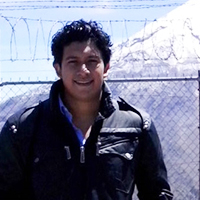NDnano Seminar: The Normalized Matrix Perturbation Method
Abstract
In 1926, Schrödinger supplied the theoretical basis for analyzing the time evolution of a quantum system through his famous equation that now bears his name. Soon after, an intrinsic interest emerged to get exactly solvable models by using the Schrödinger equation. However, only a very small number of problems were fulfilling this specific requirement. Since the vast majority of physical systems are rather complicated to be treated exactly, one may try to find approximate solutions with the aid of perturbation methods. Recently, I proposed an efficient method to solve any perturbation problem in quantum mechanics. This new alternative approach, the Matrix Perturbation Method, allows us to obtain any order correction of the wavefunction in a very straightforward way. However, I neglected the normalization process of it. In this talk, I describe the analytical calculation of the normalization constant, which complements theoretical analysis of the matricial method. To assess the efficacy and advantages of this new method, five particular systems were analyzed: harmonic oscillator perturbed by linear potential, cubic anharmonic oscillator, repulsive harmonic oscillator, repulsive linear anharmonic oscillator, and a binary waveguide array. In the analyzed cases, we prove that our normalized approximative solution is quite similar to the exact solution and significantly better than the other approximative methods reported previously.
Biosketch

Braulio Villegas is a physicist specializing in quantum optics and light propagation in nonlinear waveguide arrays. He received his Optics Master of Science degree in 2015 and quite recently his Ph.D degree in 2020 at the National Institute for Astrophysics, Optics and Electronics in Tonantzintla, Puebla, Mexico. He has collaborated with Prof. Demetrios Christodoulides at a one-year R&D internship at CREOL, where he developed work in progress, an experience that has encouraged him to look at new R&D experiences abroad to build his own personal researcher profile.